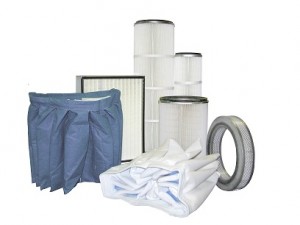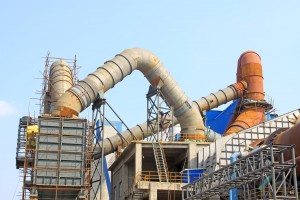 One of the most important components in an industrial vacuum is the filter. A properly maintained filter ensures consistent airflow of the vacuum system. Maintained filters also lead to maximum vacuum suction, which means it will pick up material efficiently and increase the life of the vacuum system. Here are a few important tips for vacuum filter maintenance:
One of the most important components in an industrial vacuum is the filter. A properly maintained filter ensures consistent airflow of the vacuum system. Maintained filters also lead to maximum vacuum suction, which means it will pick up material efficiently and increase the life of the vacuum system. Here are a few important tips for vacuum filter maintenance:
- Add vacuum filter cleaning/replacement to your Periodic Maintenance (PM) schedule
- Try to piggyback the filter change with other PM activity to reduce down time.
- Making filter changes part of a regular PM protocol will not only make your industrial vacuum system more reliable and efficient, it can also uncover other issues before they become downtime.
- Monitor the vacuum pressure gauge
- In most cases 15 inches of water is a good indication that it’s time to clean or replace the filer(s).
- If the filter pressure gets too high, the vacuum will automatically shut off, resulting in downtime.
- Replace filters as needed
- Replacing filters at the correct intervals will not only extend the life of your system, it will also reduce energy costs.
- A properly maintained filter will reduce the number of times you need to replace it throughout the life of the vacuum.
- Order extra filters
- If you need to pick up a larger amount of material than normal, having an extra set of filters in stock will enable you to change the expired filters quickly, without losing any time.
- Inform your maintenance team
- Train your maintenance team how to replace and clean the filters. Some vacuum systems will have a different cleaning requirements and filter access may vary depending on model; top, bottom or side entry access.
- Always refer to the vacuum operation and maintenance manual for specific instructions.
For more information on industrial vacuum filters, including how to select the right media for the material you are picking up, please contact us or visit the DEMARCO Vacuum Accessories page.
 Grain dust is highly combustible and can burn or flare up if enough becomes airborne or accumulates on a surface and finds an ignition source. To help reduce or eliminate accumulations of ignitable dusts inside a plant or facility, industrial vacuums are the ideal solution for efficient and effective cleaning.
Grain dust is highly combustible and can burn or flare up if enough becomes airborne or accumulates on a surface and finds an ignition source. To help reduce or eliminate accumulations of ignitable dusts inside a plant or facility, industrial vacuums are the ideal solution for efficient and effective cleaning. Limited Lifetime Warranty – Any industrial vacuum should come with a limited lifetime warranty. Purchasing a vacuum system is a long-term investment decision, which is why it is important to get a manufacturer’s warranty giving you the assurance and long-lasting protection in the product you are buying. It marks the manufacturer’s unwavering commitment to quality that lasts.
Limited Lifetime Warranty – Any industrial vacuum should come with a limited lifetime warranty. Purchasing a vacuum system is a long-term investment decision, which is why it is important to get a manufacturer’s warranty giving you the assurance and long-lasting protection in the product you are buying. It marks the manufacturer’s unwavering commitment to quality that lasts. Crystalline silica, often referred to simply as “silica,” is an important industrial mineral that is found in stone, soil and sand, as well as in concrete, brick, mortar and a number of other materials. Prolonged exposure to silica dust, produced while drilling these materials, can lead to illnesses, particularly silicosis and even lung issues.
Crystalline silica, often referred to simply as “silica,” is an important industrial mineral that is found in stone, soil and sand, as well as in concrete, brick, mortar and a number of other materials. Prolonged exposure to silica dust, produced while drilling these materials, can lead to illnesses, particularly silicosis and even lung issues.